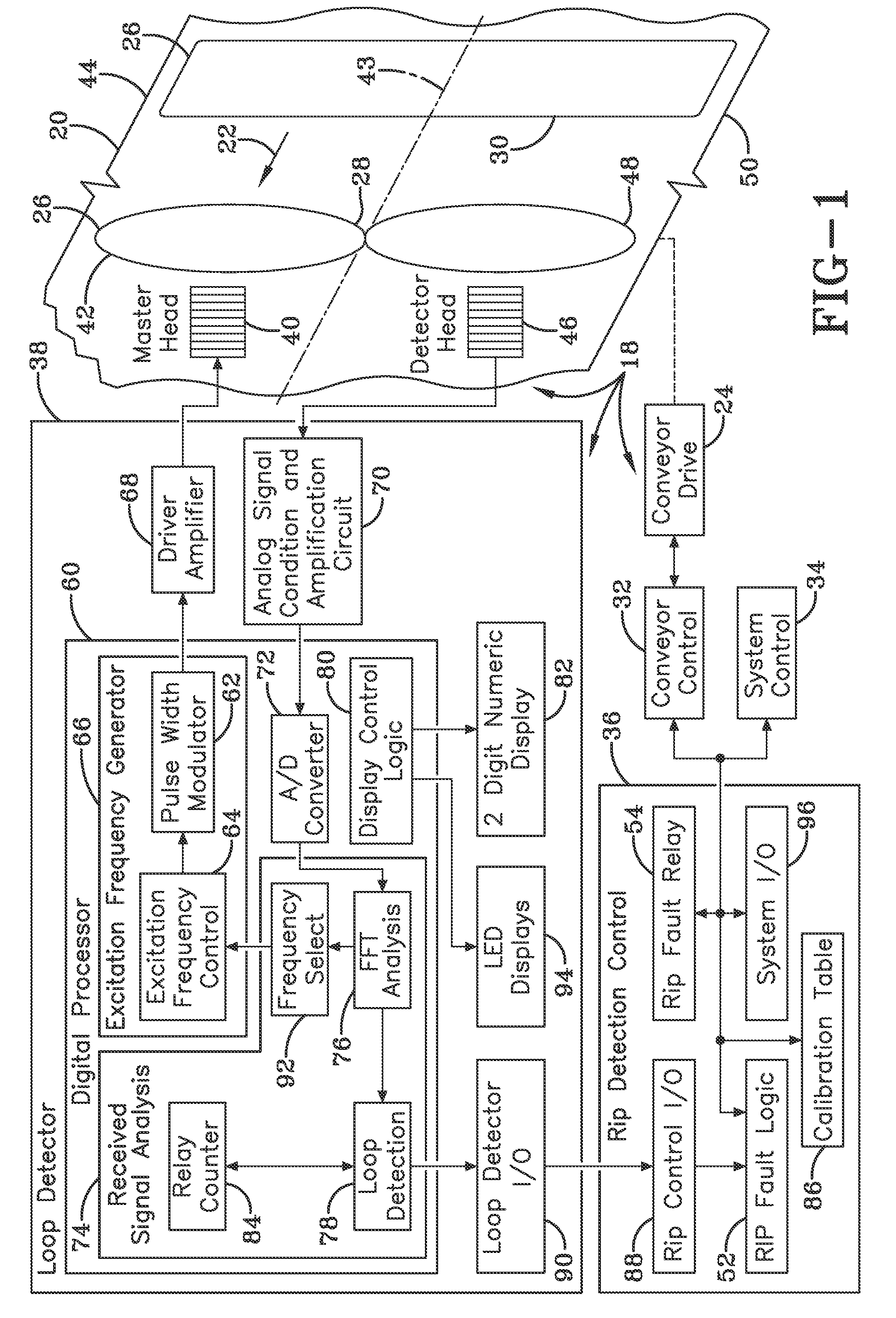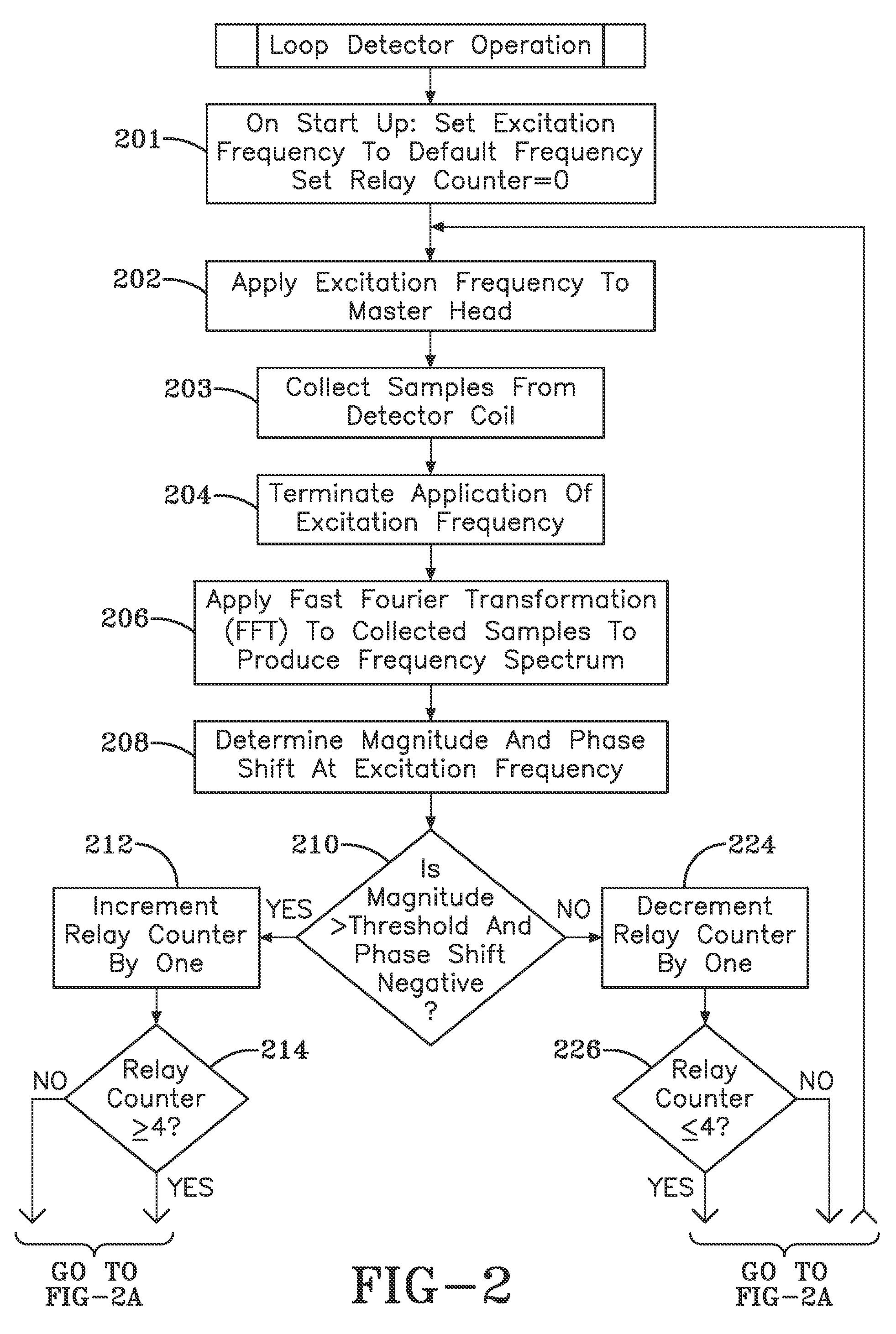Digital processor sensor loop detector and method
a digital processor and sensor technology, applied in the field of conveying belts, can solve the problems of reducing the sensitivity of environmental variables, affecting the accuracy of environmental variables, so as to reduce the sensitivity to changes in environmental variables, reduce the sensitivity to environmental noise, and reduce the sensitivity to environmental variables. the effect of slits, cuts or tears
- Summary
- Abstract
- Description
- Claims
- Application Information
AI Technical Summary
Benefits of technology
Problems solved by technology
Method used
Image
Examples
Embodiment Construction
[0024]Referring to FIG. 1, an exemplary embodiment of a rip detection system 18 is applied to a conveyor belt 20 that is moved in a direction indicated by the arrow 22 by a conveyor drive 24 in a known manner. A series of sensor loops 26 are supported by the conveyor belt 20. The sensor loops 26 extend transversely across the conveyor belt 20 and are spaced apart over a length of the conveyor belt. The sensor loops 26 can be made of one or more conductors and have different configurations, for example, an inverted or figure eight configuration 28 or a loop configuration 30. The exact spacing between the sensor loops 26 depends on the type of conveyor belt 20 and its intended application. The conveyor drive 24 contains the necessary pulleys, shafts, motors and other known mechanical and electromechanical components. The conveyor drive 24 is electrically connected to a conveyor control 32 which, in turn, is often in electrical communications with an overall system control 34. In this ...
PUM
 Login to View More
Login to View More Abstract
Description
Claims
Application Information
 Login to View More
Login to View More - R&D
- Intellectual Property
- Life Sciences
- Materials
- Tech Scout
- Unparalleled Data Quality
- Higher Quality Content
- 60% Fewer Hallucinations
Browse by: Latest US Patents, China's latest patents, Technical Efficacy Thesaurus, Application Domain, Technology Topic, Popular Technical Reports.
© 2025 PatSnap. All rights reserved.Legal|Privacy policy|Modern Slavery Act Transparency Statement|Sitemap|About US| Contact US: help@patsnap.com



